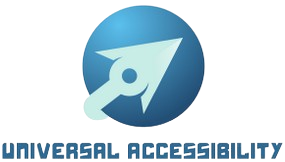Overview of EML viewers
In today’s digital era, email communication remains a cornerstone of business and personal interactions. As we exchange emails, we often encounter EML files, which store email messages along with their attachments. However, viewing these files without proper tools can be challenging. This article provides a comprehensive overview of EML viewers, shedding light on their significance, types, features, and future trends.
Introduction to EML Viewers
Emails have become an integral part of our daily communication, and so have the files associated with them. EML (Electronic Mail Format) files store email messages in a standardized format. EML viewers play a pivotal role in the digital landscape by allowing users to open and view these files without being restricted to a specific email client. This introduction aims to highlight the growing need for such tools in facilitating seamless access to email content.
Understanding EML Files
To comprehend the significance of EML viewers, it’s essential to delve into the nature of EML files themselves. An EML file encapsulates the entire content of an email, including text, attachments, sender details, and timestamps. These files provide a standardized way of storing email data, making them compatible with various email clients and platforms. Understanding the structure and purpose of EML files lays the foundation for appreciating the value that EML viewers bring to the table.
Importance of EML Viewers
The importance of EML viewers extends beyond mere convenience. In a world where flexibility and accessibility are paramount, these viewers offer users the freedom to open and manage EML files without depending on specific email clients. Whether you’re a business professional archiving crucial emails or an individual managing personal correspondence, EML viewers streamline the process, enhancing efficiency and productivity in dealing with email data.
Types of EML Viewers
Online EML Viewers
Online EML viewers cater to the modern user’s demand for instant and hassle-free solutions. Accessible through web browsers, these tools eliminate the need for software installation. Users can simply upload their EML files online, gaining quick and secure access to their email content. This section will delve into the benefits and considerations of using online EML viewers, emphasizing their accessibility and platform independence.
Desktop EML Viewers
Desktop EML viewers, on the other hand, offer offline solutions with enhanced features. Installed on users’ computers, these viewers provide a dedicated environment for managing EML files. Exploring the functionalities and advantages of desktop EML viewers will help users make informed decisions based on their specific needs and preferences.
Features to Look for in an EML Viewer
When choosing an EML viewer, users should consider several key features to ensure optimal performance. From file compatibility to user interface design and security measures, each aspect plays a crucial role in determining the effectiveness of the viewer. This section will outline the essential features users should look for, empowering them to make well-informed decisions in selecting the right EML viewer for their requirements.
Advantages of Using EML Viewers
The use of EML viewers offers several advantages, including:
- Flexibility to access email content without email clients.
- Enhanced organization and search capabilities for archived emails.
- Protection against email client compatibility issues.
- Simplified sharing and collaboration on email content.
How to Choose the Right EML Viewer
To select the most suitable EML viewer for your needs, assess your requirements regarding file handling, security, user interface preferences, and budget constraints. Consider exploring trial versions or user reviews to evaluate the performance and features of different EML viewer options.
Installation and Usage of EML Viewers
Installing an EML viewer is a straightforward process that even those with limited technical expertise can easily handle. Follow these simple steps to get started with your EML viewer:
- Download from a Trusted Source: Begin by selecting a reputable source from which to download your chosen EML viewer software. It’s essential to download from a trusted provider to ensure the safety and integrity of your system.
- Follow Installation Instructions: Once you’ve downloaded the software, locate the installation file and double-click to initiate the installation process. Follow the on-screen prompts and instructions provided by the installer to complete the installation.
- Open EML Files Directly: After successful installation, launch the EML viewer application. You can typically find the application icon on your desktop or in the start menu. Double-click the icon to open the viewer.
- Navigate Email Content: With the EML viewer open, you can now navigate through your email content with ease. Simply select the EML file you wish to view from your file directory or use the viewer’s built-in file explorer to locate the desired file.
- Utilize Familiar Commands and Tools: Once you’ve opened an EML file, you’ll find that the viewer interface is often intuitive and user-friendly. Familiar commands such as zoom, search, and navigation tools allow you to interact with your email content effortlessly.
Comparing Popular EML Viewer Tools
When it comes to selecting the right EML viewer for your needs, it’s essential to consider the features and functionalities offered by different software options. Here’s a brief comparison of three popular EML viewer tools:
- FreeViewer EML Viewer:
- Pros:
- Free to use, making it accessible to all users.
- Simple and straightforward interface for easy navigation.
- Cons:
- Limited advanced features compared to paid alternatives.
- May lack certain customization options.
- Pros:
- SysTools EML Viewer:
- Pros:
- Comprehensive set of features including advanced search and filtering capabilities.
- Intuitive user interface designed for efficiency and productivity.
- Cons:
- Requires a purchase for full access to all features.
- May have a steeper learning curve for beginners.
- Pros:
- Kernel EML Viewer:
- Pros:
- Robust functionality for handling large volumes of EML files.
- Advanced security features to ensure the safety of your email data.
- Cons:
- Premium pricing may be prohibitive for some users.
- Installation and setup process may be more complex compared to other options.
- Pros:
Consider your specific requirements, budget, and level of technical expertise when comparing these EML viewer tools. By weighing the pros and cons of each option, you can determine the best fit for your email management needs.
Tips for Efficient EML File Management
To optimize your experience with EML viewers, consider the following tips:
- Organize EML files into folders based on sender, subject, or date.
- Regularly delete unnecessary emails and attachments to free up storage space.
- Back up important emails to prevent data loss.
- Update your EML viewer software regularly to access the latest features and security enhancements.
Security Concerns with EML Viewers
While EML viewers offer convenience and accessibility, it’s crucial to prioritize data security when handling sensitive email content. Ensure that your chosen EML viewer implements robust encryption protocols, data privacy measures, and secure file handling practices to mitigate the risk of unauthorized access or data breaches.
Future Trends in EML Viewing Technology
The landscape of EML viewing technology is poised for significant advancements in the coming years. As email communication remains a vital aspect of personal and professional interactions, EML viewers will evolve to meet the evolving needs of users. Here are some future trends expected in EML viewing technology:
| Trend | Description | Impact |
| User Interface Design | Future EML viewers will prioritize user experience through intuitive and visually appealing interfaces. | Enhanced usability and accessibility for users, leading to improved productivity and satisfaction. |
| Integration with Cloud Storage | EML viewers will integrate seamlessly with popular cloud storage platforms, allowing users to access and manage EML files. | Increased flexibility and accessibility, enabling users to view and share email content from anywhere. |
| Enhanced Collaboration Features | Collaboration tools within EML viewers will facilitate seamless communication and collaboration among users. | Improved teamwork and productivity, as users can easily share and collaborate on email content. |
User Interface Design
Future EML viewing technology will prioritize user interface design to provide an intuitive and visually appealing experience for users. Interfaces will be designed with user-centric principles in mind, ensuring ease of navigation and efficient interaction with email content. By focusing on user experience, EML viewers will enhance usability and accessibility, ultimately leading to improved productivity and user satisfaction.
Integration with Cloud Storage
The integration of EML viewers with cloud storage platforms is expected to become more prevalent in the future. Users will be able to seamlessly access and manage their EML files stored in the cloud, eliminating the need for local storage and facilitating remote access from any device with an internet connection. This integration will offer increased flexibility and accessibility, empowering users to view and share email content anytime, anywhere.
Enhanced Collaboration Features
Future EML viewers will incorporate enhanced collaboration features to facilitate seamless communication and collaboration among users. These features may include real-time editing, commenting, and version control functionalities, allowing teams to collaborate on email content more effectively. By promoting collaboration within the EML viewing environment, users can streamline teamwork and productivity, ensuring smoother communication and task management.
As email communication continues to evolve and adapt to changing technological landscapes, EML viewing technology will play a crucial role in supporting and enhancing the email experience. By embracing these future trends, EML viewers will continue to meet the dynamic needs of users in an increasingly digital world.
In conclusion, EML viewers serve as indispensable tools for accessing, managing, and securing email content stored in EML files. By understanding their features, types, and benefits, users can make informed decisions to streamline their email management processes and enhance productivity.
Frequently Asked Questions about EML Viewers
- What is an EML file? An EML file is a standard file format used to store email messages, including text, attachments, sender information, and timestamps.
- Why do I need an EML viewer? An EML viewer allows you to open and view EML files without relying on specific email clients, offering convenience and accessibility to email content.
- Are EML viewers compatible with all operating systems? Many EML viewers are compatible with popular operating systems such as Windows, macOS, and Linux, offering cross-platform support for seamless accessibility.
- Can I open attachments within EML files using viewers? Yes, most EML viewers allow you to open and access attachments within EML files, providing comprehensive email viewing capabilities.
- Is there a difference between free and paid EML viewers? Free EML viewers offer basic functionalities, while paid versions may include additional features such as advanced search options, batch processing, and technical support.

